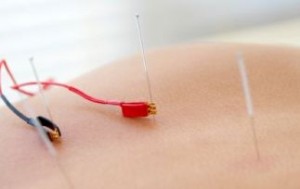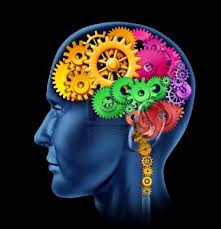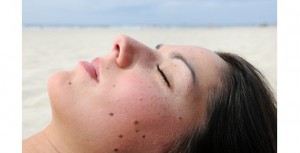 Electro-acupuncture is the application of an electrical current to acupuncture needles to stimulate healing within the body.
Electro-acupuncture is the application of an electrical current to acupuncture needles to stimulate healing within the body.
Electro-acupuncture is similar to traditional acupuncture in that the same points are stimulated during a treatment. As with traditional acupuncture, needles are inserted on specific points along the body, and the needles are then attached to a modality that generates a continuous electric pulse using small clips.
The electro-acupuncture device delivers about 10-80 milli-amps depending upon the selected setting. Patients may experience a tingling sensation while being treated with electro-acupuncture, which is due to the current. The average treatment length with electro-acupuncture is 10-20 minutes.
The benefits of using electrical stimulation are:
- Electro-acupuncture helps reduce total treatment time by providing continuous stimulus.
- It is easy to control the frequency of the modality, and it can be customized to produce a stronger current as needed.
According to the principles of traditional Chinese medicine, illness is caused when qi does not flow properly through the body. Acupuncturists determine whether qi is weak, stagnant or out of balance, which indicates the points to be stimulated.
Electroacupuncture is considered to be especially useful for conditions in which there is an accumulation of qi, such as in chronic pain syndromes, or in cases where the qi is difficult to stimulate. Using a gentle electrical current in conjunction with acupuncture needles is an alternative way to stimulate the point and enhance the qi.
Victoria Spaurel is a registered acupuncturist having graduated from the Canadian College of Acupuncture and Oriental Medicine in Victoria BC in 2005. Her passion for Traditional Chinese Medicine (TCM) philosophy and diagnostic theory is deeply rooted in long-developed holistic beliefs in true health and wellness.
As a well-known acupuncturist; Victoria teaches at the Pacific Rim College of Acupuncture in Victoria BC and is a 20 year veteran to complimentary health care. In that time she has developed a keen ability to identify and effectively treat patterns of disharmony with regard to the health of her patients. She is well loved by patients in her family practice and respected by her colleagues.
For more information on electro-acupuncture please contact our office at 250-382-0018.



